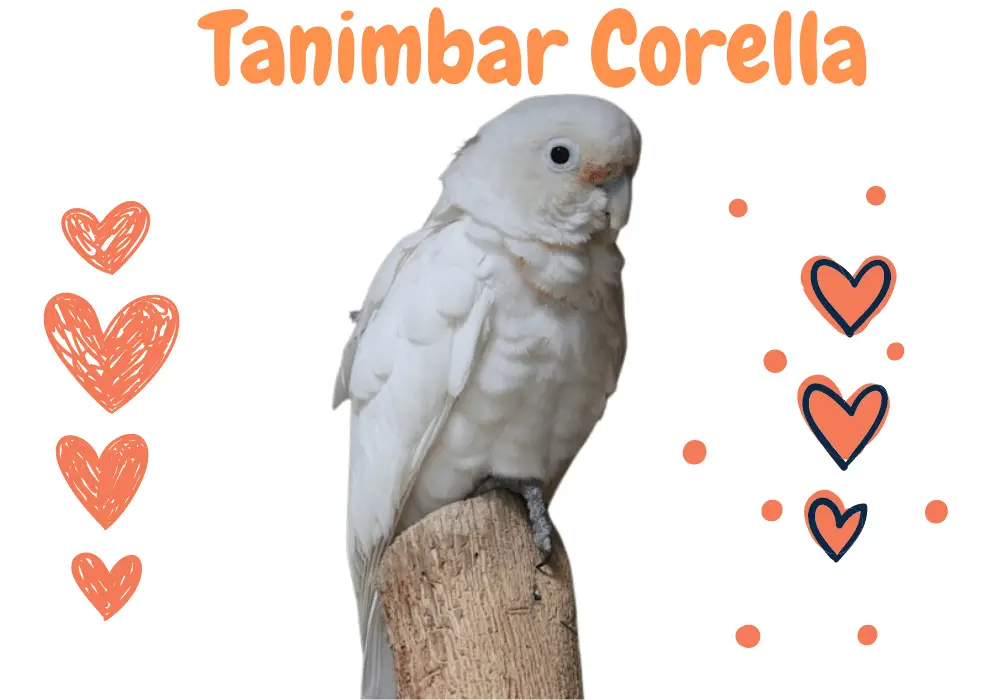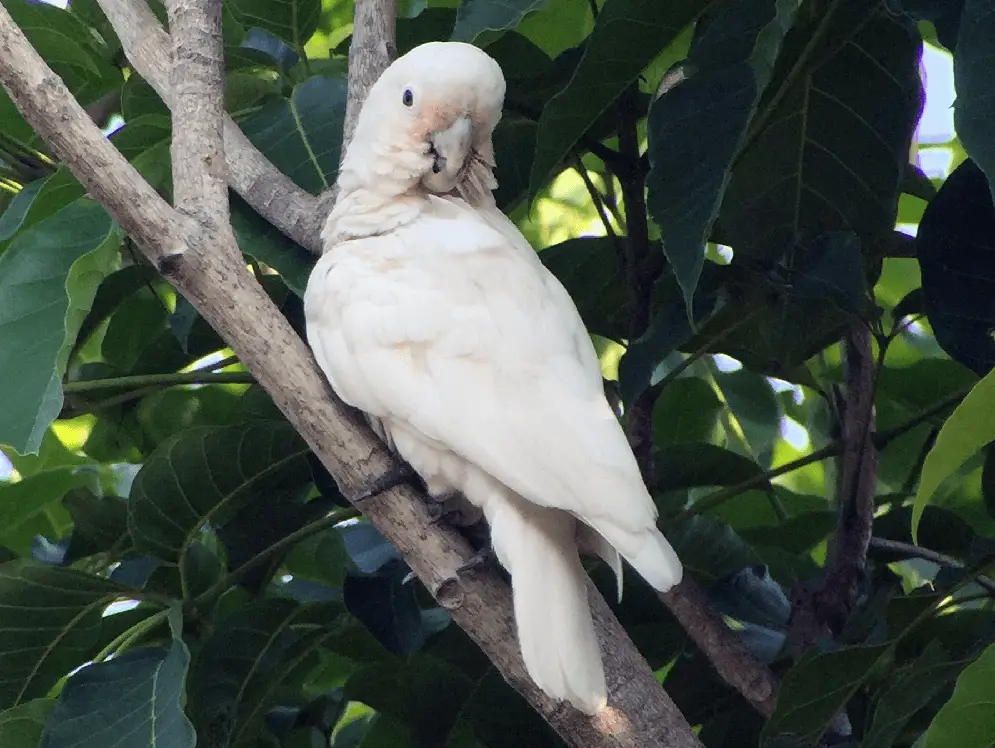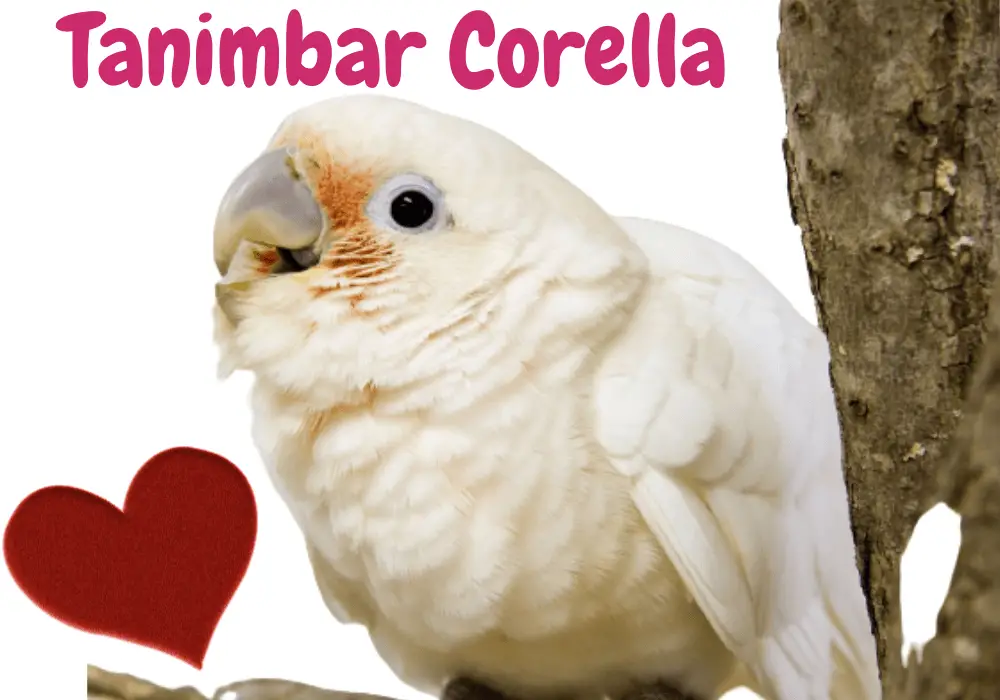
Tanimbar Corella or Goffin’s cockatoo 30–32 cm; 300 g; female slightly smaller. Unlikely to be confused within native range, but on Kai Is (where species is introduced) might be confused with C. galerita. Medium-crested
Cacatua goffiniana Scientific name definitions
- NT Near Threatened
- Names (18)
- Monotypic

Tanimbar corella
white corella-type cockatoo, with pink on lores; the remainder of plumage white, but with pink feather bases; undersurfaces of wings and tail washed yellow; periophthalmic skin pale blue; eye brown in male, reddish-brown in female; bill and feet grey. Immature reportedly has a dark grey eyes.
Systematics History
Closely related to C. sanguinea. Previously known as C. goffini, but this name was based on two specimens of C. ducorpsii, of which it is thus a junior synonym ; earlier replacement, C. tanimberensis, was shown to be an objective junior synonym of goffini and subjective junior synonym of ducorpsii, necessitating introduction of new name . Monotypic.
Subspecies
Introduced to Kai Is (SE Moluccas), Singapore, Taiwan, and Puerto Rico.

Tanimbar corella
Distribution
Larger islands (Yamdena, Larat, Selaru) of Tanimbar Group, in extreme E Lesser Sundas.
Habitat
Cleared and cultivated coastal areas and inland forests, both primary and secondary.
Movement
Feeds largely on maize fields of the coastal plain, flying to roost in the forest. No long-distance movements were reported.
Diet and Foraging
Generally feeds on coastal plain and roosts in the forest inland; apart from the maize crops that the species is notorious for plundering, little is known about the diet. Foraging flocks may number up to 300 birds.
Sounds and Vocal Behavior
A noisy scream has been reported for adults, while young make mewing notes and a sound like a young Nymphicus hollandicus.

Breeding
No information for the wild. In an aviary, lays 2–3 eggs, the incubation (by both sexes) occupies 28 days, while nestlings remain in the nest for c. 10 weeks and may continue to be fed by the adults for several weeks beyond fledging; chick has sparse yellowish-white down.

Conservation Status
Not globally threatened. CITES I. Currently considered Near Threatened. The population must have been very large to withstand the onslaught of aviary trade in the early 1970s, coincident with significant deforestation commencing. During the period 1983–1987 average of 11,349 birds were exported annually; species were placed on CITES Appendix I in 1992.
A thorough survey of Yamdena in 1992 suggested a total population of 300,000–445,000 birds, with c. 12,000 feeding on agricultural crops, chiefly maize grown for local subsistence and of no export value, whereas the cockatoos do have such value
some villages have two bird-catchers who work in tandem, taking 30–50 corellas/day, which they sell for between c. US$1 and US$17. If the local human population did not export corellas, it is quite likely that they might eat them instead. Moderate numbers kept in captivity.




















